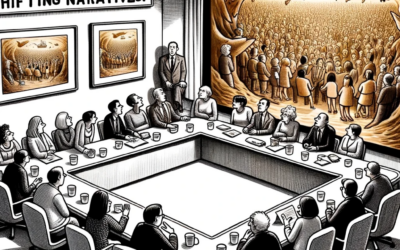Tilting at Windmills
Many of our “enemies” are illusions–specters of past traumas or the product of misguided beliefs. We allow old narratives to play out again and again, unquestioned. We simply draw our swords and start swinging, just as Don Quixote does in Miguel de Cervantes’ novel. That’s where the term “tilting at windmills” originated. Don Quixote goes into battle with windmills that he imagines to be giants:
“When they came in sight of thirty to forty windmills that rose from that plain. And no sooner did Don Quixote see them that he said to his squire, Sancho Panza, ‘Fortune is guiding our affairs better than we ourselves could have wished. Do you see over yonder, friend Sancho, thirty or forty hulking giants? I intend to do battle with them and slay them. With their spoils we shall begin to be rich for this is a righteous war and the removal of so foul a brood from off the face of the earth is a service God will bless.'”
Tilting away from Windmills
Often it takes a trusted friend, mentor, or coach, who knows how to both speak truth to power, to get us to put down our swords and see the myths we’ve created for what they really are. In Don Quixote, Sancho Panza plays this role.
“What giants?” [Sancho asks.]
“Those you see over there,” replied his master, “with their long arms. Some of them have arms well nigh two leagues in length.”
“Take care, sir,” cried Sancho. “Those over there are not giants but windmills. Those things that seem to be their arms are sails which, when they are whirled around by the wind, turn the millstone.”
The longer we’ve believed a myth, the harder it is to dispel. We create adaptive strategies and employ them so frequently that they become habitual. We tend not to question the myth or our reactions to it. We see a windmill, and we want to attack it.
To begin seeing windmills for what they really are, try these steps:
- Examine the “windmill” in front of you. Describe it. What has really happened, when, where, why, and how? Only describe what has really happened, not what you think has happened.
- Consider all the options you have to respond–not just the responses you’ve used in the past.
- Gain perspective by asking people you trust for their input, and don’t filter their responses to justify your preferred course of action.
- Think back on the “windmills” you’ve battled in the past. Try to demystify those events.
- Attend to each of those past events separately and do micro-testing to validate or invalidate your past reactions. Remember your feelings were likely tied to youthful understanding not the understanding of an adult. Dig deep and get real. Did your reactions really produce successful outcomes, or did they simply satisfy an emotional urge?
Elements of Leadership







